|
Outer
Space Reality Show
Two incredible
astronomical tools, the orbiting Hubble
Space Telescope and ESO's Very Large Telescope on a mountaintop in
South America -- offer Earthlings incredible views of the cosmos, as
you can see in the Cosmic Cafe's Outer Space Reality Show.
Named after the
trailblazing astronomer Edwin P. Hubble,
the Hubble is a large, space-based observatory that was launched with
great fanfare in 1990. The first images captured by the space-scope
were disappointingly fuzzy, but they sharpened up once a U.S. Space
Shuttle crew installed "glasses."
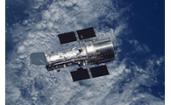
Since then, the
Hubble (right) has revolutionized
astronomy by providing unprecedented deep and clear views of the
universe, ranging from our own solar system to fledgling, far-flung
galaxies that formed not long after the Big Bang, 13.7 billion years
ago.
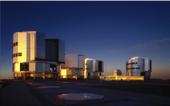 Meanwhile, back on
Earth, the incredible but
unimaginatively named Very Large Telescope array is the flagship facility for European Organization for Astronomical Research. It is the
world’s most advanced optical instrument, consisting of four
unit
telescopes located on Mount Paranal in southern Chile. Meanwhile, back on
Earth, the incredible but
unimaginatively named Very Large Telescope array is the flagship facility for European Organization for Astronomical Research. It is the
world’s most advanced optical instrument, consisting of four
unit
telescopes located on Mount Paranal in southern Chile.
The
telescopes (left) can work together, in groups of two or three, to peer
deep into the farthest reaches of the universe with crystal clarity.
The individual
telescopes were christened in the Mapuche
language of the indigeneous people of the area south of the Bio-Bio
River. The names are Antu (Sun), Kueyen (Moon), Melipal (Southern
Cross) and Yepun (Venus).
Hubble
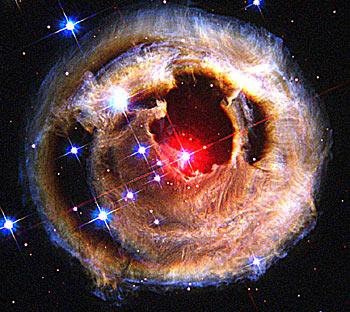
A halo of light
surrounds a
star in the Milky Way, this image is called Starry Night because it
reminded astronomers of the famed painting by impressionist master
Vincent Van Gogh.
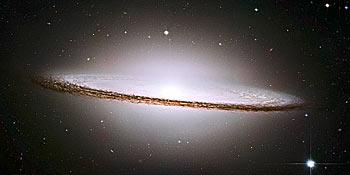
The Sombrero
Galaxy,
officially called M104, lies 28 million light years from Earth. It has
an astounding 800 billion stars - and is one of the hottest tamales in
the universe!
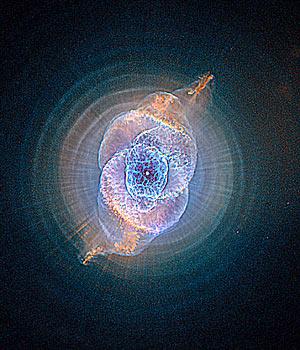
The Cat's Eye
Nebula,
located in the constellation Draco has a central star that is smaller
than the Sun but 10,000 times brighter. Its powerful stellar wind has
hollowed out the inner area of bubble and burst through its ends.
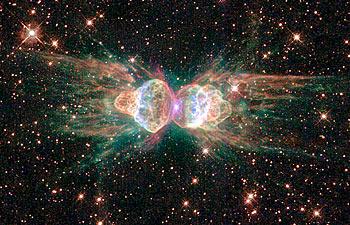
The Ant Nebula,
a cloud of
dust and gas, looks like an ant when observed using ground-based
telescopes. It's one of our galactic neighbors, lying between 3,000 and
6,000 light years from Earth.

Located in the
constellation
Sagittarius, the Trifid Nebula is a stellar nursery 9,000 light years
from Earth. New stars are being born here.
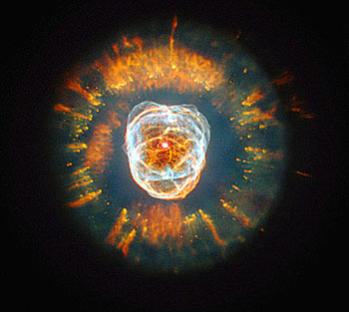
NGC 2392 is
called the
Eskimo Nebula because it looks like a face surrounded by a furry hood.
The hood is, in fact, a ring of comet-shaped objects flying away from a
dying star some 5,000 light years from Earth.
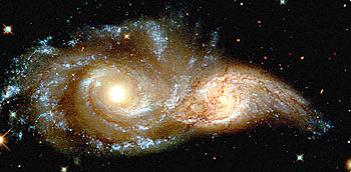
Big dog? The
swirling cores
of two merging galaxies in Canis Major look like two glowering eyes
from 114 million light years away.
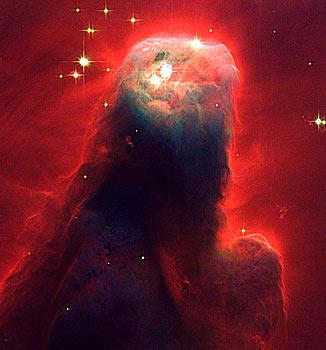
The Cone Nebula
is part of
the Christmas Tree Cluster in the constellation Monoceros. The length
shown here, 2.5 light years, is equal to 23 million trips to the Moon
and back.
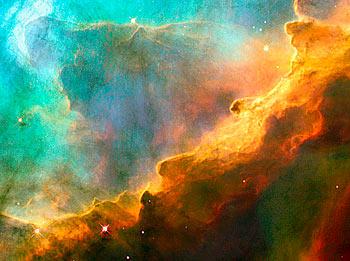
Double, double
toil and
trouble, fire burn, and caldron bubble... Part of the Swan Nebula,
5,500 light years away, is an roiling elemental stew of hydrogen,
oxygen, sulphur and other elements.
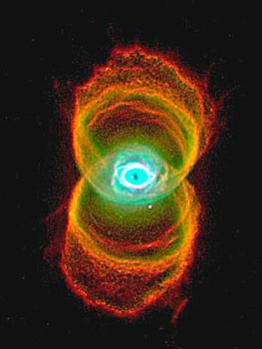
The Hourglass
Nebula, 8,000
light years away, has a pinched-in-the-middle look because the stellar
winds that shape it are weaker at the center. It's also been called
"God's Eye" for obvious reasons.
Click here for photos from
ESO's Very Large Telescope
Catch a ride on the flying saucer back to
the Outer Space Art Gallery homepage
|
